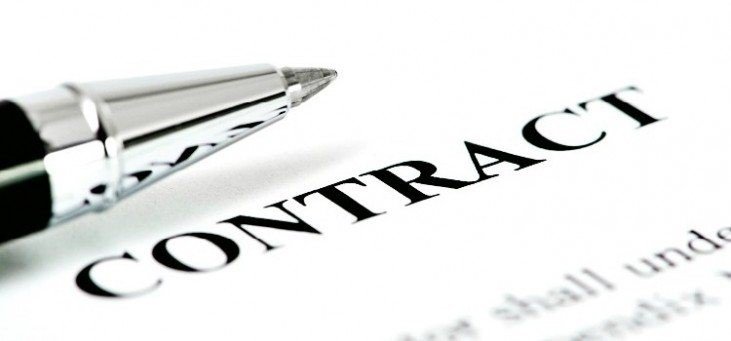Anatomy of a Ghostwriting Contract
January 28, 2022
When you first start out as a writer, you grab gigs where and whenever you can. You don’t sweat the formalities like contracts. However, as you build your career and you start to realize the value of your time, you learn that those handshake deals start to get too risky.
It’s one thing if you’re penning a quick blurb for $50 and the client flakes out on you, but it’s a whole different ballgame when you become an established ghostwriter and you have a full slate of work on your calendar.

The best way to protect your interests and your time is to create a contract that you use for each assignment.
By creating a solid template that has all the parts you need, you can quickly modify it for each new project.
The key is to make sure you have all of the important elements of a ghostwriting contract in that template.
So, what makes up a good ghostwriting contract? Let’s take a look.
The 6 Must-Have Sections of a Ghostwriting Contract
That quickie contract you see in the movies that’s scribbled on a napkin won’t cut it these days. The whole point of a contract is to avoid ugly situations down the road.
Don’t think of a contract as a lack of trust, but as a safeguard against unforeseen circumstances. To that end, there are six essential sections your ghostwriting contract should have. Here is the breakdown.
1. Basic Information
This is where you lay out the most basic nuts and bolts. It’s almost a cover page. Think of things like:
- Your name and contact information
- The client’s name and contact information
- Contract date
- Project due dates for outline, first draft, and final
2. Price
There is more to consider here than just the whole project price.
You’re doing this for money, so it’s essential to nail down the specifics right away to avoid surprises later.
This section should include:

- Price – What is the total and how is it measured? Will you be paid by the hour, by the word, or by the project?
- Method – How will you receive your money? If you think you’ll get a quick PayPal deposit you’ll be horrified when a client says they’ll snail-mail you a check. Figure it out right away to everyone’s satisfaction.
- Payment times – Will you get one payment when the project is done, or will you get payments at various milestones such as outline and first draft? Set these expectations right away.
- Currency – This may seem absurd, but if you get a client that is across a border, you’ll need to establish this. If you agree to $1000, but it turns out to be Canadian dollars instead of USD, you’re looking at about $777 with the current exchange rate. That’s not a surprise you want!
3. Description of the Project
This section is where you really lay out the meat of the project itself.
What are you doing? How long should it be? What elements are required? Where will you get your information and photos? Will you be required to interview people?
Work with your client to establish these guidelines so each party knows what is expected.
4. Ownership Agreements
Typically, most ghostwriting projects end up with the client retaining full ownership of the work.

That’s kind of how ghostwriting is defined.
The writer does the work, but the client gets the credit. It’s not such a bad deal when done right.
However, there may be some situations where the client would rather share royalties than pay an upfront cost.
Or they may be willing to put your name on the project in some form.
Think of all the possibilities. If it’s a novel or a memoir, do you get anything if someone buys the movie rights?
Ownership is one of the trickiest parts of ghostwriting. It can easily slip into some gray areas if you don’t hammer out the details at the beginning.
5. Revision Expectations
As a writer you’ve probably said, “Don’t worry! I’ll gladly do all the revisions needed,” and then realized that a certain client would have you doing an absurd amount of revisions because they can’t make up their mind.
Of course, as a professional writer, you need to be open to doing revisions, but it’s also well within your rights to set a limit.
You might want to include one or two revisions as a part of the agreed-upon price and then set an hourly cost for any revisions beyond that.
This sort of clause sets expectations but also leaves it open for unforeseen situations.
6. Escape Clause
As a professional ghostwriter, you don’t want to break your contract. The last thing you need is to develop a reputation as unreliable.
However, sometimes life happens, and you realize that you simply won’t be able to complete the project. The same can be true for the person hiring you.
By including an escape clause that lays out exactly what should happen if either party needs to bail out on the project, you’re covering one of the biggest issues that can turn up.

Establish what will be owed, what happens to any work that has already been completed including rights, and solutions for any other complications that could arise from the breaking of the contract.
A Good Contract Benefits Both Parties
If you’re worried that having a contract may scare off potential clients, you may be right. But, if a client is concerned about entering into a reasonable contract with you, do you really want that client?
It’s time to stop thinking of contracts as binding and limiting. In a way, a good contract does just the opposite. It sets the ground rules so both parties know what to expect and their own responsibilities. There’s a certain freedom in having it all laid out.
If you want to be a ghostwriter, even part-time, do yourself a favor and draw up a contract template. It’s guaranteed to make your life easier and help you establish yourself as a reputable ghostwriter.































